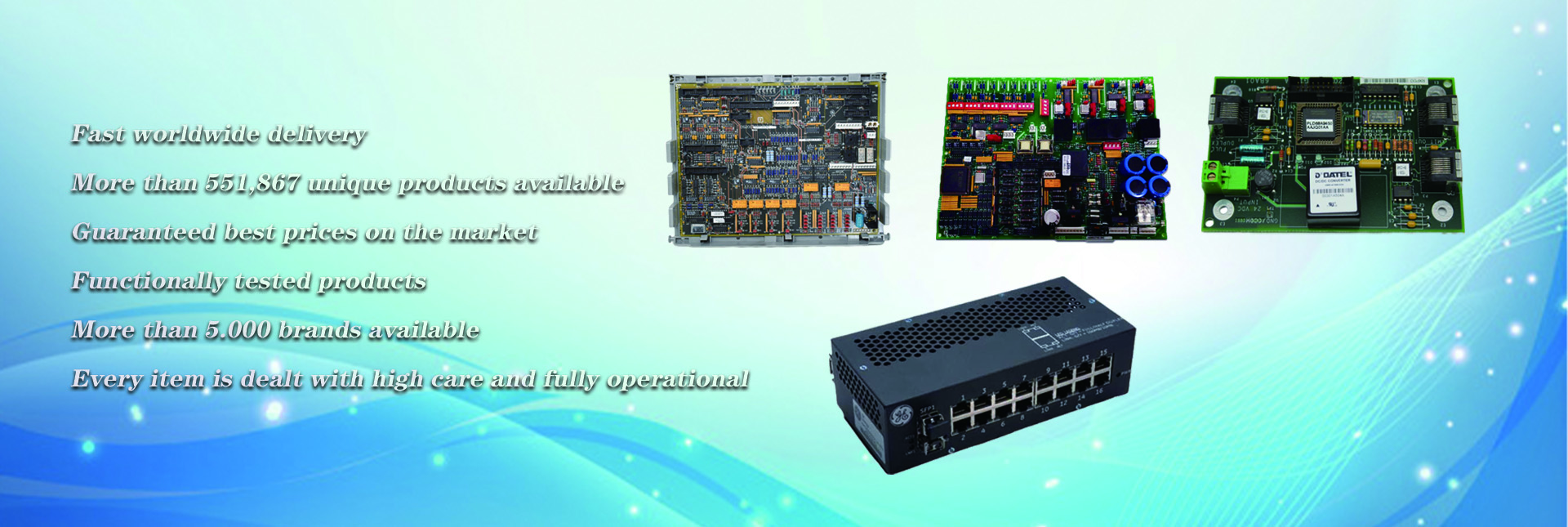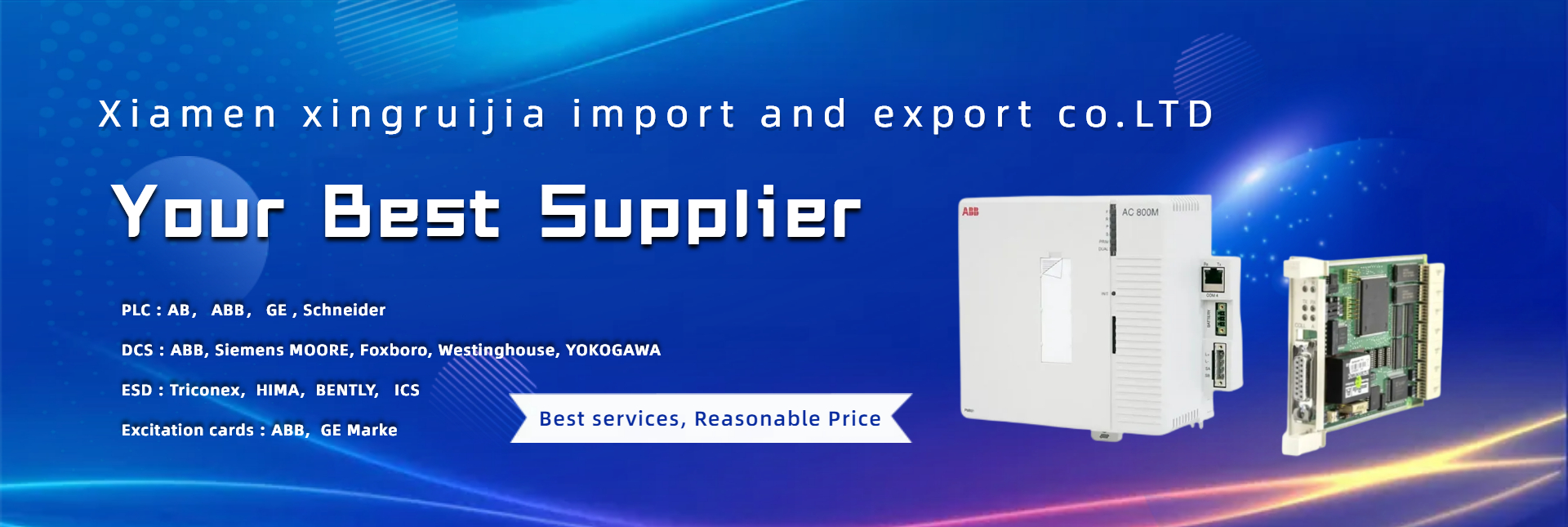At first, PLC was mainly used for logic control of switching value. With the progress of PLC technology, its application field is expanding. Today, PLC is not only used for on-off control, but also for analog and digital control. It can collect and store data, and also monitor the control system; It can also be networked and communicated to achieve control and management across a wide range of regions. PLC has increasingly become an important role in the family of industrial control devices.
1. For on-off control
The ability of PLC to control switching value is very strong. The number of input and output points controlled can be as few as ten or dozens of points, and as many as hundreds, thousands, or even tens of thousands. Because it can be connected to the Internet, the number of points is almost unlimited. No matter how many points can be controlled, the logic problems controlled can be varied: combined, sequential, real-time, delayed, non-counting, counting, fixed sequence, random work, and so on.
The hardware structure of PLC is variable, and the software program is programmable. It is very flexible when used for control. If necessary, multiple sets or groups of programs can be written and called as needed. It is very suitable for the needs of multiple working conditions and multiple state changes in industrial sites.
There are many examples of using PLC to control the switching value. Metallurgy, machinery, light industry, chemical industry, textile, etc., almost all industrial industries need it. At present, the first goal of PLC is that it can be easily and reliably used for the control of switching value, which is incomparable with other controllers.
2. For analog quantity control
Analog quantities, such as current, voltage, temperature, pressure, etc., vary continuously. Industrial production, especially continuous production process, often needs to control these physical quantities.
As an industrial control electronic device, if PLC can not control these quantities, it is a big deficiency. Therefore, PLC manufacturers have carried out a lot of development in this area. At present, not only large and medium-sized computers can carry out analog control, but also small computers can carry out such control. PLC shall be equipped with A/D and D/A units for conversion between analog quantity and digital quantity for analog quantity control. It is also an I/O unit, but a special I/O unit.
A/D unit converts analog quantity of external circuit into digital quantity, and then sends it to PLC; The D/A unit converts the digital quantity of PLC into analog quantity and then sends it to the external circuit. As a special I/O unit, it still has the characteristics of anti-interference of I/O circuit, isolation of internal and external circuits, exchange of information with input/output relay (or internal relay, which is also an area of PLC working memory, readable and written), etc.
A in A/D here is mostly current, or voltage, and also temperature. A in D/A is mostly voltage or current. The variation range of voltage and current is mostly 0~5V, 0~10V, 4~20mA, and some can handle positive and negative values. Here, D, minicomputers are mostly 8-bit binary numbers, and medium and large computers are mostly 12-bit binary numbers. A/D and D/A have both single and multiple channels. There are many multiplexed input and output relays. With A/D and D/A units, the remaining processing is digital, which is not difficult for PLC with information processing capability. Medium and large PLCs have stronger processing capabilities. They can not only add, subtract, multiply and divide numbers, but also square, interpolate, and perform floating-point operations. Some have PID instructions, which can perform proportional, differential, and integral operations on the deviation system, and then generate corresponding outputs. Almost all of them can be calculated by the computer.
In this way, it is completely possible to realize analog control with PLC.
PLC carries out analog control, and there are units combined with A/D and D/A, and PID or fuzzy control algorithm can be used to achieve control, which can achieve high control quality. The advantage of using PLC to control analog quantity is that the switch quantity can be controlled while the analog quantity is controlled. This advantage is not possessed by other controllers, or the realization of control is not as convenient as PLC. Of course, if the system is purely analog, the use of PLC may not be as good as the use of regulator in terms of performance-price ratio.
3. For motion control
The actual physical quantity, in addition to switching quantity, analog quantity, also has motion control. For example, the displacement of machine tool components is often expressed in digital quantities. The effective method for motion control is NC, namely digital control technology. This is a computer-based control technology born in the United States in the 1950s. Today, it is very popular and perfect. At present, the CNC rate of metal cutting machine tools in advanced countries has exceeded 40% – 80%, and some even higher. PLC is also a computer-based technology, and is increasingly perfect. The PLC can receive counting pulse with frequency up to several k to tens of k Hz. It can receive this pulse in many ways and can also receive it in multiple ways. Some PLCs also have pulse output function, and the pulse frequency can also reach tens of k. With these two functions, plus PLC has data processing and computing capabilities, if equipped with corresponding sensors (such as rotary encoders) or pulse servo devices, various controls can be completely realized according to the principle of NC. High and medium level PLC, also developed with NC unit or motion unit, can realize point control. The motion unit can also realize curve interpolation and control curve motion. Therefore, if the PLC is configured with such a unit, the NC method can be used to control the digital quantity. The newly developed motion unit even released the programming language of NC technology, which provides convenience for better digital control with PLC.
4. For data collection
With the development of PLC technology, its data storage area is becoming larger and larger. For example, the data storage area (DM area) of DEVISON PLC can reach 9999 words. Such a huge data storage area can store a large amount of data. Data acquisition can use a counter to record the number of collected pulses and transfer them to the DM area regularly. A/D unit can also be used for data acquisition. When the analog quantity is converted into digital quantity, it will be periodically transferred to the DM area. The PLC can also be configured with a small printer to print the data in the DM area regularly.
The PLC can also communicate with the computer. The data in the DM area is read out by the computer and then processed by the computer. At this time, PLC becomes the data terminal of the computer.
Power users have used PLC to record their electricity consumption in real time, so as to realize the charging method of different electricity consumption time and different pricing, and encourage users to use more electricity during the low period of electricity consumption, so as to achieve the purpose of reasonable electricity consumption and energy saving.
5. For signal monitoring
There are many PLC self-checking signals and many internal devices, and most users do not fully play their role. In fact, it can be used to monitor the PLC’s own work or the control object. For a complex control system, especially the automatic control system, it is very necessary to monitor and further self-diagnosis. It can reduce the system faults, make it easy to find faults, improve the cumulative mean time between failures, reduce the fault repair time, and improve the reliability of the system.
6. For networking and communication
PLC networking and communication capabilities are very strong, and new networking structures are constantly introduced.
PLC can be connected with personal computer for communication, and computer can be used to participate in programming and control the management of PLC, making PLC more convenient to use.
In order to give full play to the role of computers, a computer can control and manage multiple PLCs, up to 32. One PLC can also communicate with two or more computers to exchange information, so as to realize more monitoring of the PLC control system. PLC and PLC can also communicate, one-to-one PLC can communicate, and several PLC can communicate, up to dozens or hundreds.
PLC, intelligent instrument and intelligent execution device (such as frequency converter) can also communicate, exchange data and operate with each other. It can be connected into a remote control system, and the range of the system can be as large as 10 kilometers or more. It can form a local network. Not only PLC, but also high-end computers and various intelligent devices can enter the network. Either bus network or ring network can be used. The net can also be nested. The network can also be bridged. Networking can organize thousands of PLCs, computers and intelligent devices in a network. Nodes in the network can communicate and exchange information directly or indirectly.
Networking and communication are meeting the needs of the development of computer integrated manufacturing system (CIMS) and intelligent chemical plants. It can make industrial control from point to line and then to aero, so that the control of equipment level, production line and factory management level can be connected as a whole, thus creating higher benefits. This infinitely beautiful prospect has been more and more clearly displayed in front of our generation.
The application of the above points is mainly qualitative. In terms of quantity, there are large and small PLCs. So its control range can also be large or small. Small ones only control one device, even one component, one site; Large ones can control multiple equipment, one production line, and even the entire factory. It can be said that all occasions of industrial control are inseparable from PLC.
Post time: Mar-16-2023


